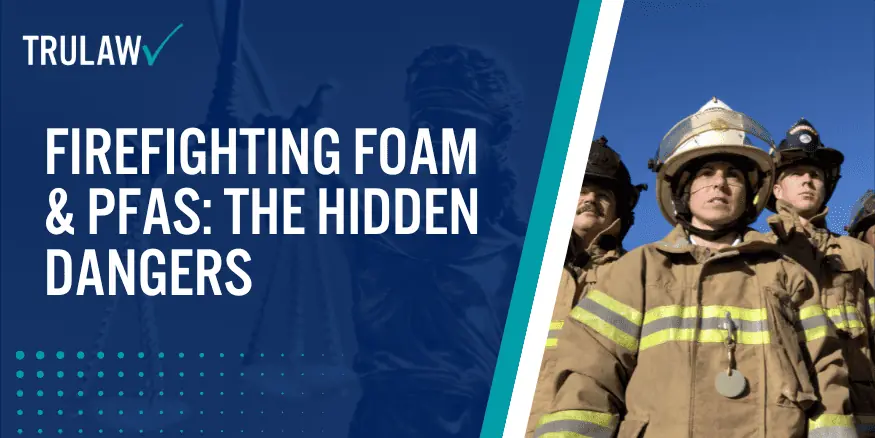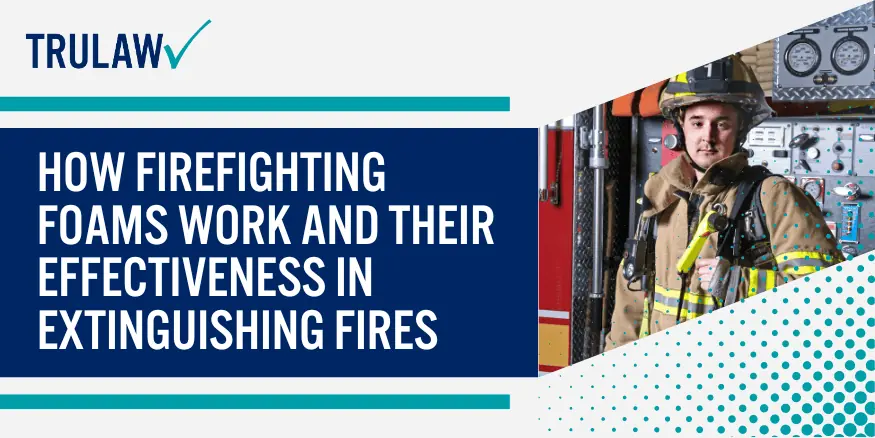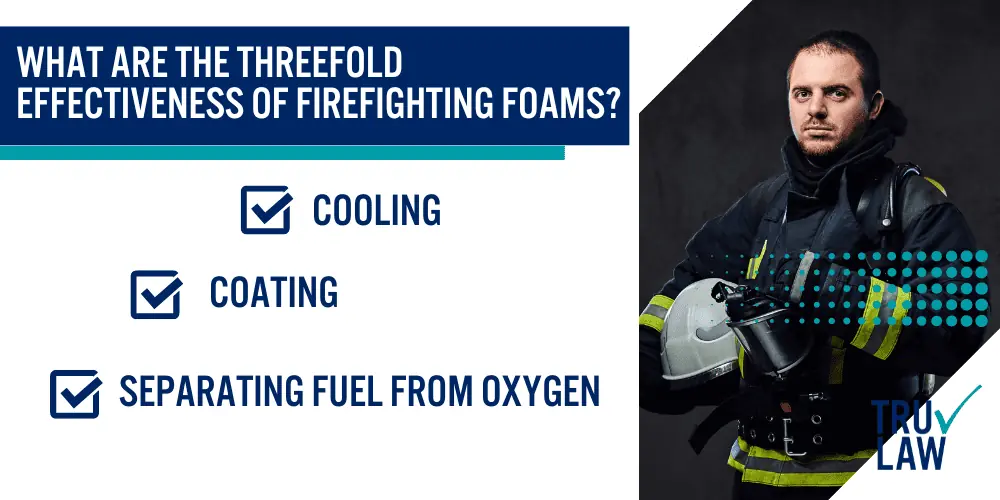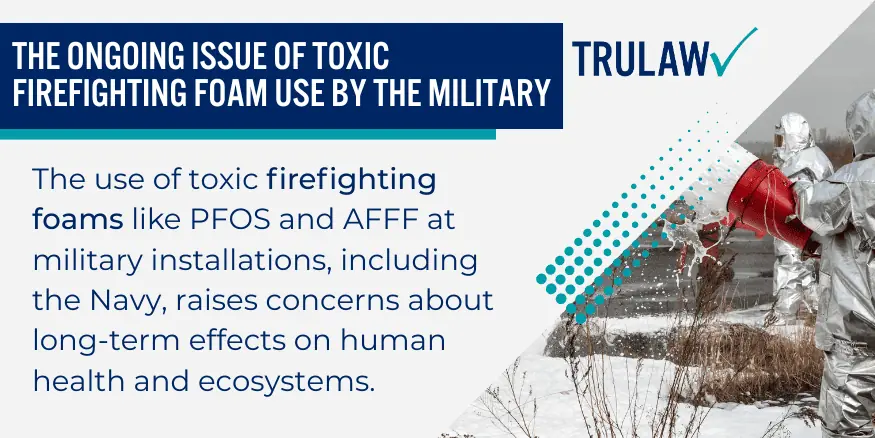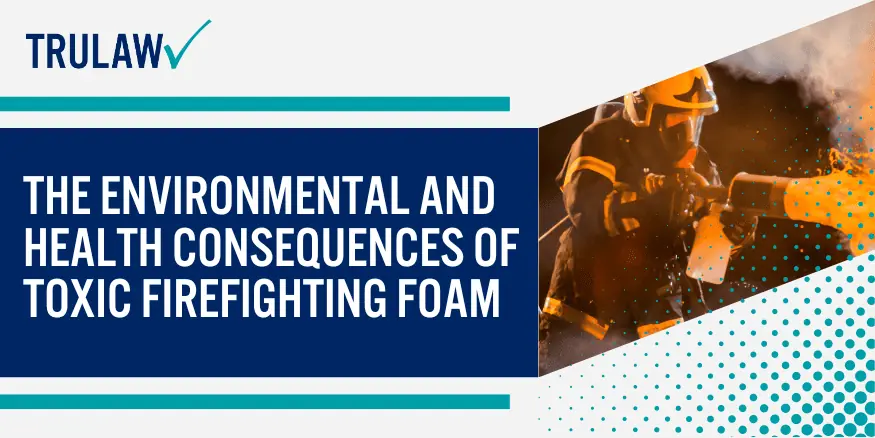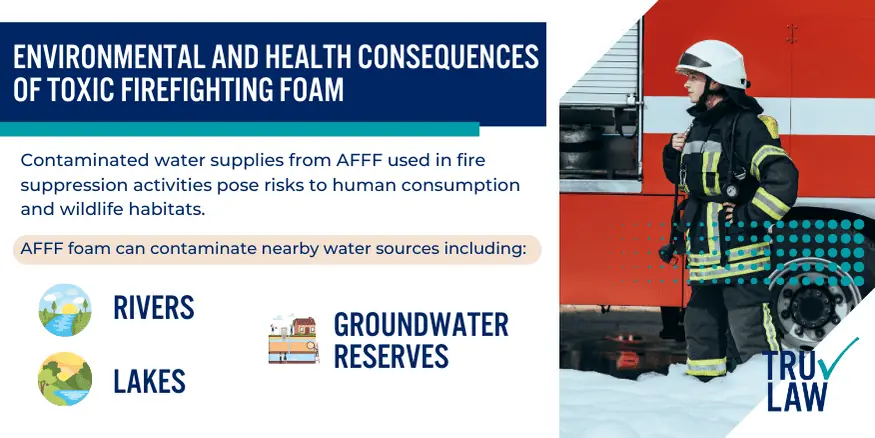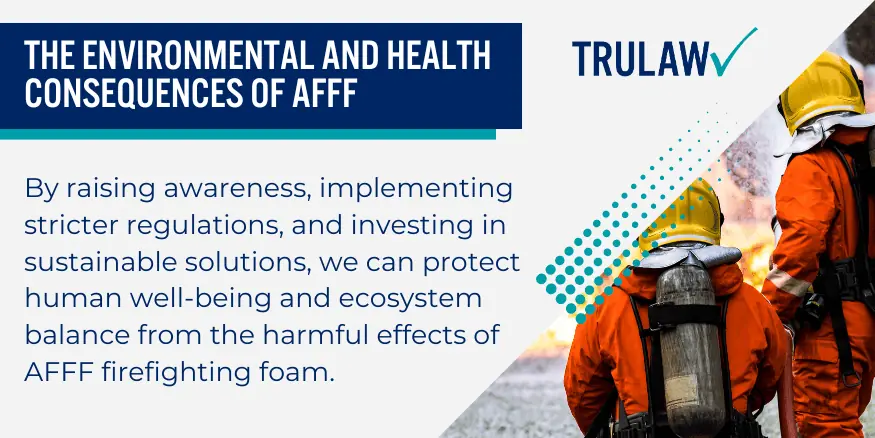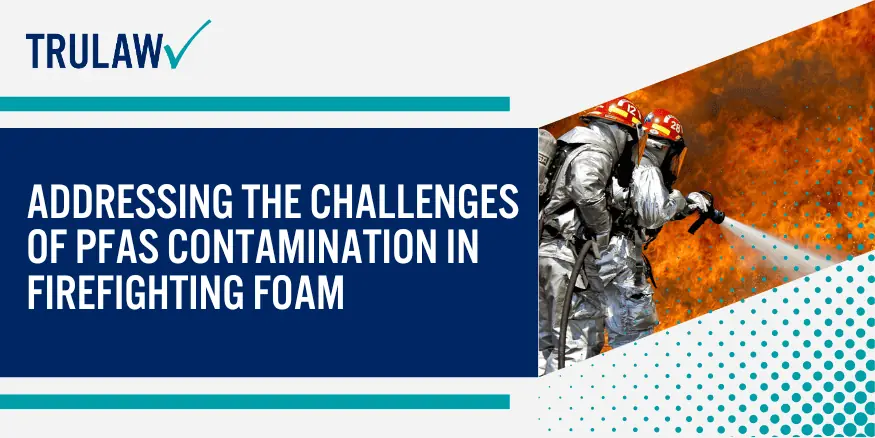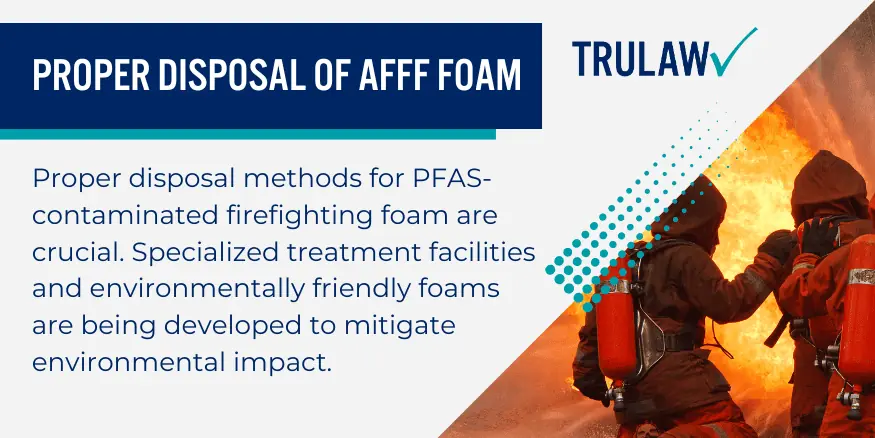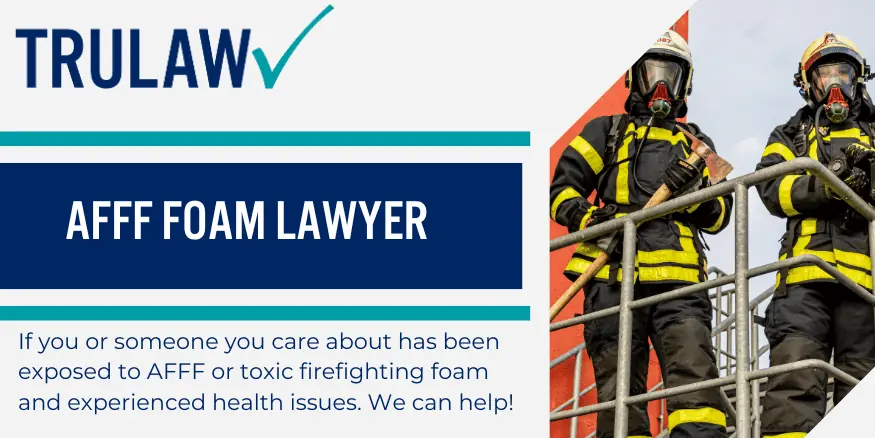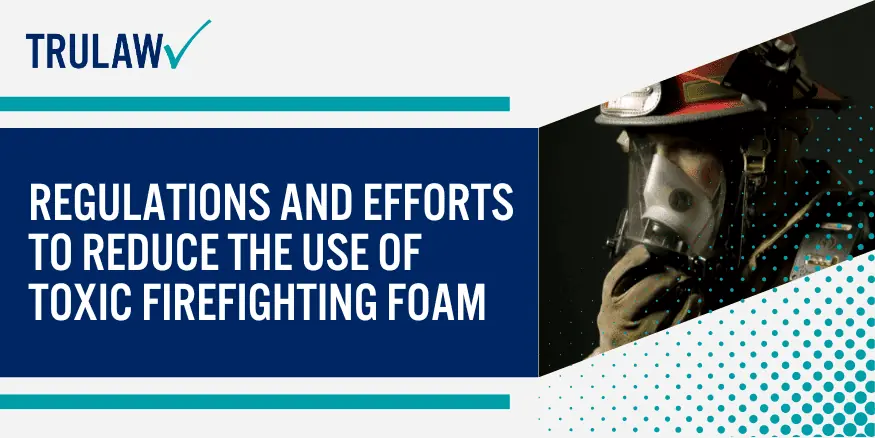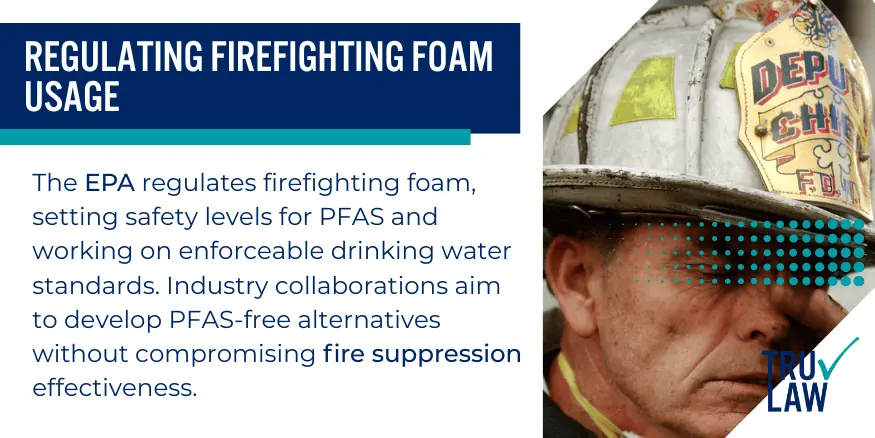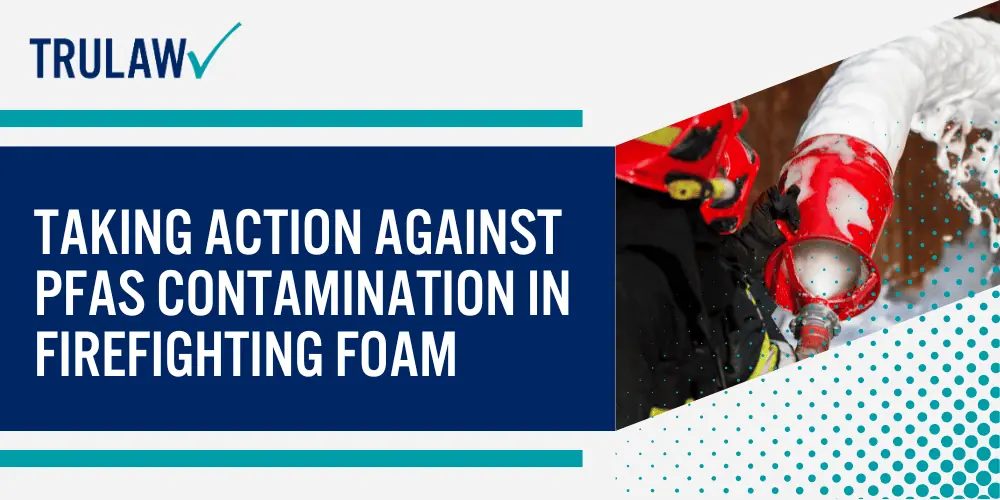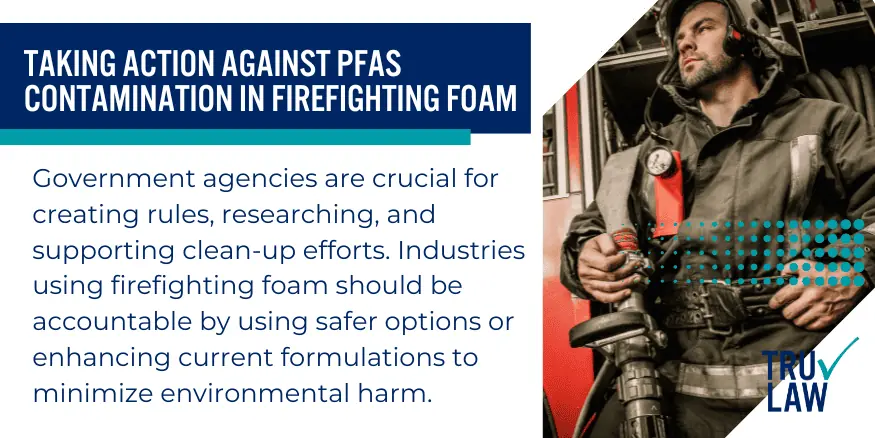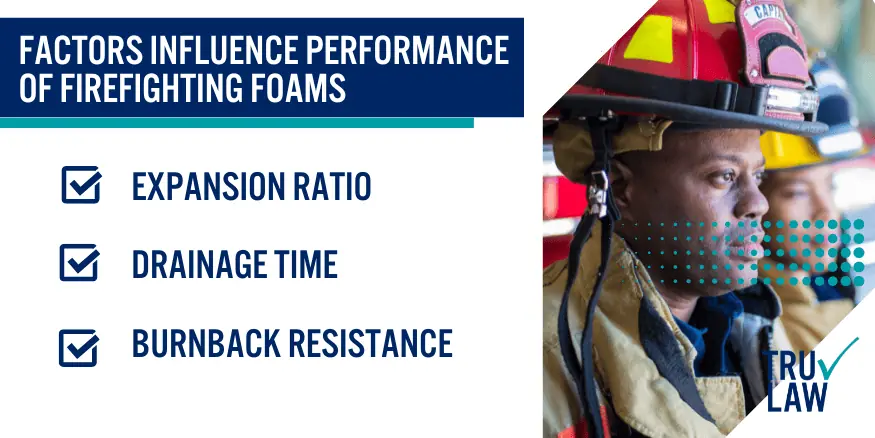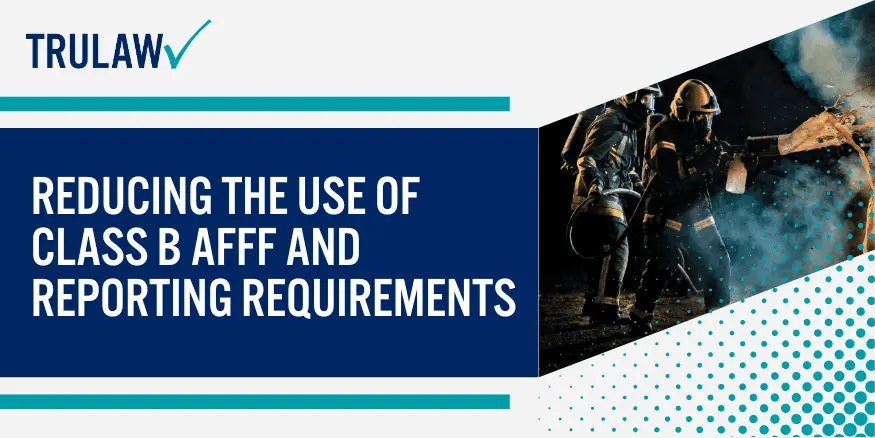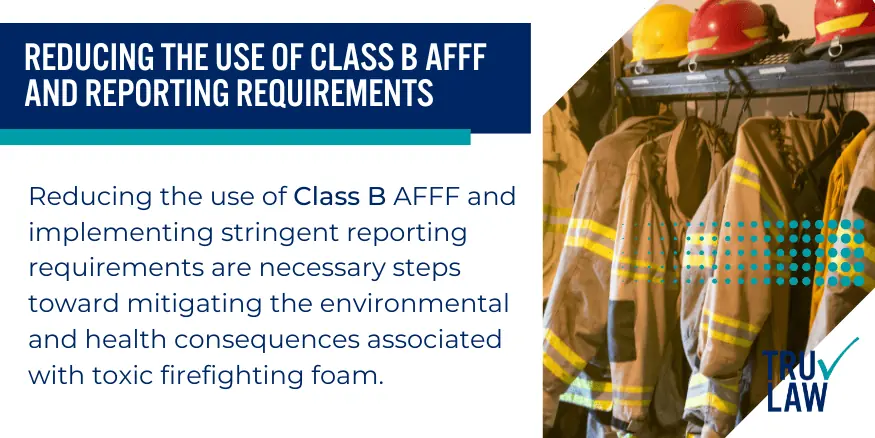
Firefighting Foam’s Longevity:
Firefighting foam, used by firefighters contains per- and polyfluoroalkyl substances (PFAS), such as PFOA and PFOS, which contain fluorine.
These PFAS compounds are highly persistent and do not easily break down over time, contributing to the foam’s exceptional fire suppression capabilities.
Once released into the environment during firefighting operations or accidental spills, firefighters can use chemical foam to combat the spread of PFAS chemicals.
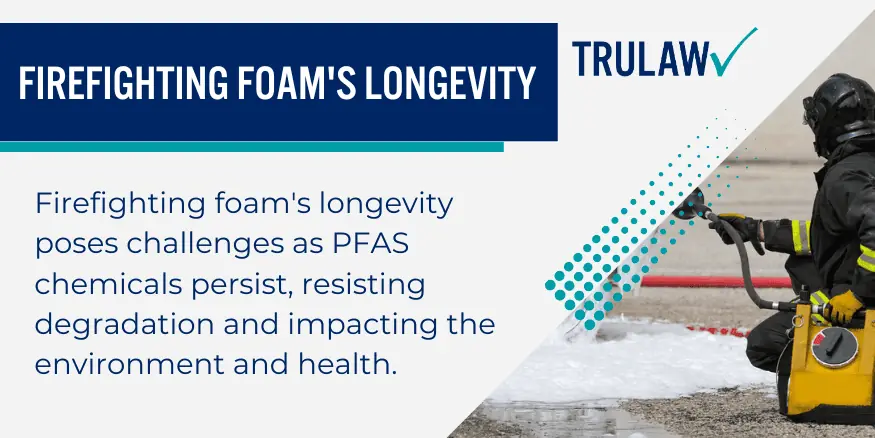
These chemicals can persist in drinking water for years or even decades.
The longevity of firefighting foam, including new foams containing PFOA and PFOS, poses a significant challenge for firefighters.
Traditional cleanup methods struggle to effectively remove these PFAS chemicals from contaminated sites due to their resistance to degradation.
This persistence means that even long after a fire has been extinguished, the potential environmental impacts and Firefighting Foam Health Effects containing PFOS, PFOA, and PFAS chemicals remain.
Contamination of Soil, Groundwater, and Surface Water:
When firefighting foam, including new foams containing PFOA and PFOS, is discharged during fire suppression activities, it often seeps into the ground and can contaminate both soil and groundwater.
These PFAS chemicals have been found to leach into soils and infiltrate deep underground water sources, posing a significant risk of widespread contamination for firefighters and communities.
Surface water bodies such as rivers, lakes, and ponds are also vulnerable to contamination from firefighting foam runoff containing PFOA and PFOS.
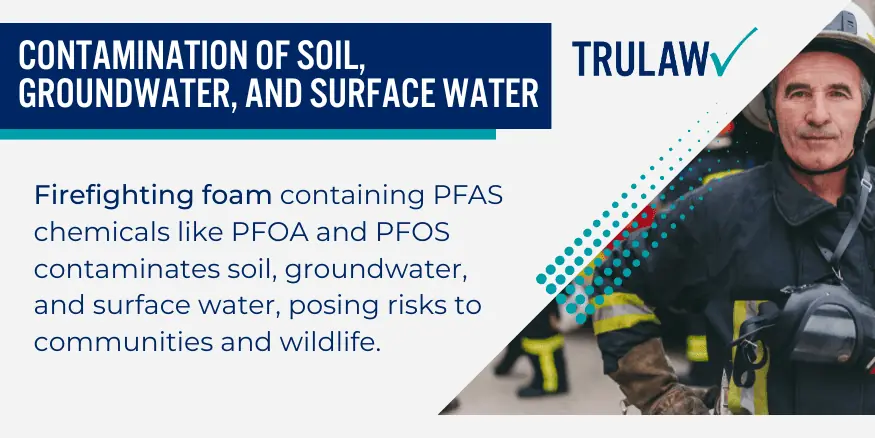
As rainwater washes away residual foam from affected areas or if there are direct discharges of the new foams into water bodies during emergencies, PFAS compounds enter these aquatic environments.
This contamination poses risks for human consumption and wildlife, including firefighters, that depend on these water sources.
The presence of cancer-causing substances such as PFOA and PFOS in the water further exacerbates the dangers.
Firefighting foam, including new foams, is crucial for firefighters in combating fires.
However, the use of firefighting foam, which may contain PFOA, poses long-lasting dangers to the environment.
The persistence of firefighting foam can lead to widespread contamination, as it remains in the environment for decades.
This article delves into the environmental impact of firefighting foam, specifically its persistence and how it affects soil, groundwater, surface water, wildlife, and aquatic ecosystems.
The use of firefighting foam containing PFOS, PFOA, and other PFAS chemicals can have detrimental effects on these natural systems.
Vulnerability of Wildlife and Aquatic Ecosystems:
Wildlife, aquatic ecosystems, and firefighters are particularly susceptible to the environmental impact of firefighting foam containing PFOS and PFOA.
These compounds have been shown to accumulate in the tissues of animals and can potentially disrupt ecological balance while posing health risks.
Additionally, the contamination of drinking water is a concern.

Birds, fish, amphibians, and other wildlife can be exposed to perfluorooctanoic acid (PFOA) and perfluorooctane sulfonate (PFOS) through contaminated water or by ingesting prey that has absorbed these fluorine-based chemicals.
This exposure can lead to reproductive problems, weakened immune systems, and even death.
The Fire Fighting Foam Coalition (FFFC) is actively addressing the issue of PFAS contamination in the environment.
As PFAS, including PFOA and PFOS, enters the food chain, it can bioaccumulate in top predators, further magnifying its effects on drinking water and fluorine levels.
Aquatic ecosystems suffer from increased vulnerability due to contamination from firefighting foam containing PFOS and PFOA.
The presence of these fluorine-based compounds disrupts natural processes within these ecosystems, affecting the growth and survival of various species.
It also poses a threat to sensitive habitats such as coral reefs and wetlands.
The EPA is taking action to address the issue.
